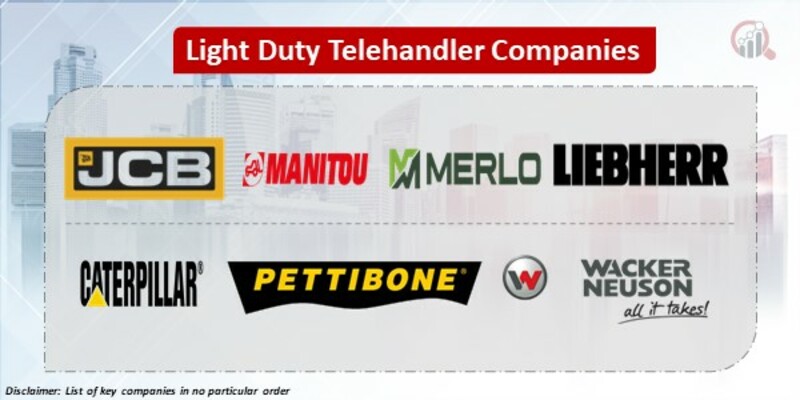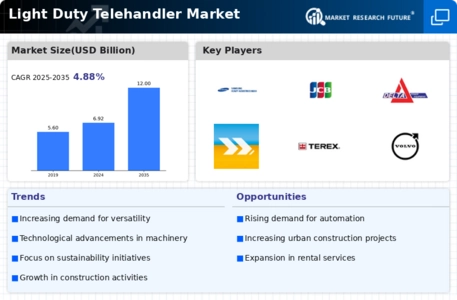Top Industry Leaders in the Light Duty Telehandler Market

The light-duty telehandler market, a vibrant subsegment of the construction equipment industry, is experiencing a period of dynamic growth. Characterized by compact size and versatile functionality, these machines offer a valuable solution for material handling tasks in construction, agriculture, and other sectors. But within this thriving landscape, a fierce competition for market share unfolds.
Strategies Shaping the Game:
-
Product Innovation: Leading players are constantly innovating, offering advanced features like improved lifting capacity, telescopic booms, and enhanced attachments. JCB's 532-140 HiViz with its 360° visibility camera and Liebherr's T14-4m with its compact footprint exemplify this trend. -
Focus on Niche Markets: Recognizing the diverse needs of different end-users, manufacturers are tailoring their offerings. Manitou's MT 700 dedicated to agriculture and Merlo's Turbofarmer aimed at vineyards showcase this targeted approach. -
Expansion Through Acquisitions and Partnerships: Consolidation is on the rise, with established players acquiring smaller companies or forging strategic partnerships to broaden their reach. Wacker Neuson's acquisition of Kramer and Manitou's collaboration with Deutz AG for hybrid technology development are prime examples. -
Digitalization and After-Sales Services: Embracing technology, companies are offering telematics, remote diagnostics, and predictive maintenance solutions to improve customer experience and machine uptime. Caterpillar's Cat Connect and JCB's LiveLink demonstrate this trend.
Factors Influencing Market Share:
-
Brand Reputation and Reliability: Established brands like JCB, Manitou, and Merlo enjoy strong brand recognition and a loyal customer base, giving them a competitive edge. -
Product Quality and Performance: Superior performance parameters, such as lifting capacity, reach, and fuel efficiency, are crucial factors influencing customer purchase decisions. -
Dealer Network and After-Sales Support: A strong and extensive dealer network ensures efficient sales, service, and parts availability, impacting customer satisfaction and brand loyalty. -
Price Competitiveness: Balancing innovative features with attractive price points is essential for attracting budget-conscious buyers.
List of the key major companies in the Light Duty Telehandler Market are
- JCB Limited
- Manitou
- Merlo
- Liebherr machines
- Caterpillar Inc
- Pettibone traverse LLC
- Sennebogen maschinenfabrik GmbH
- Wacker neuson
- Sky jack Inc
- Gehl company
Recent Developments:
August 2023: The International Organization for Standardization (ISO) publishes a new standard for the design and performance of telehandlers, aiming to improve safety and uniformity across the industry.
September 2023: The European Commission implements new safety regulations for telehandlers, aiming to improve operator protection and prevent accidents.
November 2023: The China Construction Machinery Association reports a steady increase in sales of light duty telehandlers, driven by government investments in infrastructure and housing projects.









